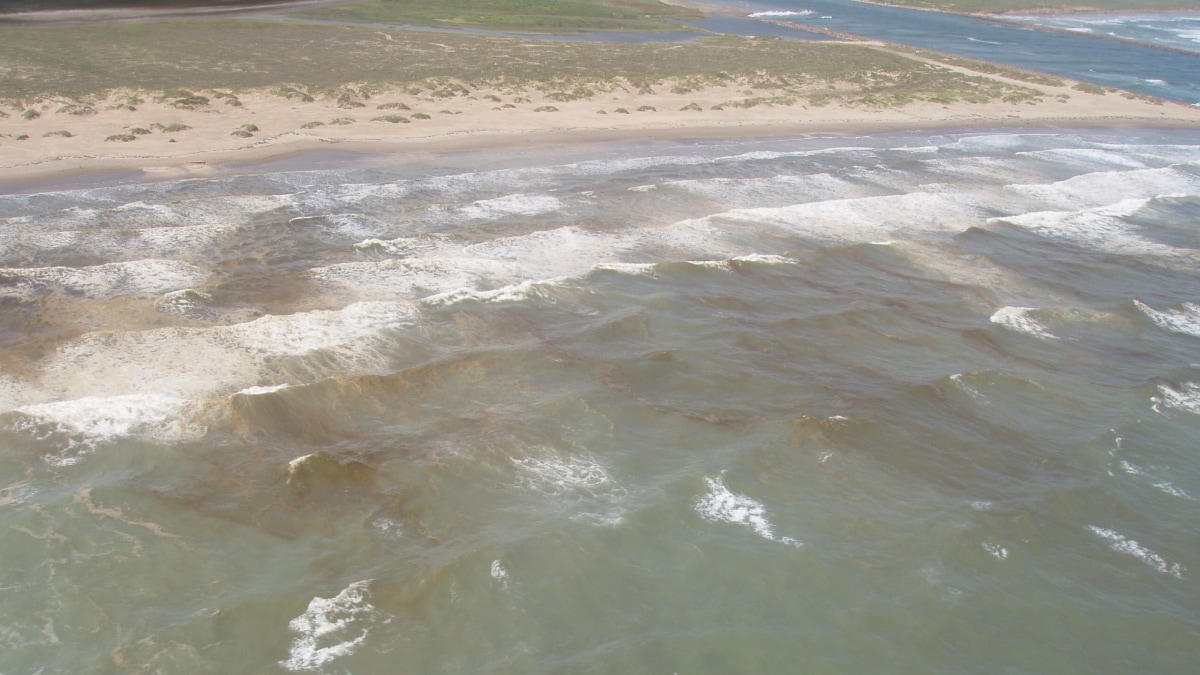Highlights
- The Florida Department of Health initiated a statewide notification system and standardized response guidance for harmful algal blooms in 2019.
- Read below about Florida's success to increase public transparency and outreach about health impacts of harmful algal blooms.

Harmful algal bloom challenges
Public health impacts of harmful algal blooms can be difficult to track, respond to, and communicate about.
Water is one of Florida's most important resources, and Floridians are motivated to protect it. Florida's warm climate can provide conditions that allow harmful algal blooms to grow in the water. This includes "red tide" in salt water and cyanobacteria in fresh water. When these blooms grow too big, they can make people and animals sick and harm the environment, tourism, and the economy.
The symptoms people experience after contact with these blooms can be similar to other common illnesses. Because of this, it can be difficult to estimate the overall impact of harmful algal blooms on public health. Also, many public and private groups in Florida address harmful algal blooms, so health guidance can be fragmented or messaging inconsistent.
Standardized harmful algal bloom response guidance
Florida Department of Health standardizes harmful algal bloom response guidance and notifications.
In 2019, the Florida Department of Health created a statewide public notification system for harmful algal blooms. The system uses daily water sample results from multiple data sources. The Florida Department of Health uses the results to inform public health messages, including those on informational signs and in press releases. Notifications are also included on the new Protecting Florida Together, Florida's one-stop shop for water quality. Protecting Florida Together provides the public with straightforward and reliable information related to harmful algal blooms.
The Florida Department of Health also worked closely with other state agencies to update the 2009 Resource Guide for Public Health Response to Harmful Algal Blooms in Florida. The 2021 edition provides tools that guide public health preparedness and response to harmful algal blooms. The guide includes information on current science, regulations, monitoring, outreach strategies, mitigation, and policy needs.
Consistent communication and collaborative surveillance
Consistent communication and collaborative surveillance improve public health preparedness.
Since July 1, 2019, the Florida Department of Health has issued more than 3,600 public health notifications for Florida's most common harmful algal bloom events. The Florida Department of Health coordinates with multiple agencies to provide the public with consistent harmful algal blooms messages. Media outlets also often report this information and further distribute it to the public.
Florida follows CDC's One Health approach for harmful algal bloom surveillance. This method connects environmental, animal, and human health data. The Florida Department of Health regularly reviews reports made to poison information centers and emergency departments about possible harmful algal bloom exposures. As of August 1, 2021, the agency has reached out to more than 2,000 licensed veterinarians with resources to help diagnose and report possible harmful algal bloom-related illnesses in companion animals.
Florida has been successful in increasing its communications about harmful algal blooms to the public. The Florida Department of Health's collaboration with public and private groups has improved overall public health preparedness and response related to harmful algal bloom events.
